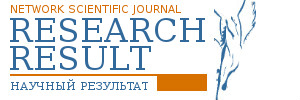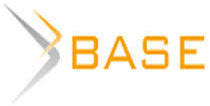DOI:
10.18413/2313-8971-2017-3-2-4-8
This paper describes the development and application of main principles of CLIL technology in Ryazan state radioengineering university in the process of close collaboration of teachers working at the department of Foreign Languages with the teachers from the faculty of Computer Science. Brief history of CLIL development abroad is given; basic principles of its implementation into the environment of engineering institutions are formulated. The main aims of introducing CLIL technology into the academic process are to develop student motivation of learning a foreign language, to give students the possibility of conscious communication in a foreign language in professional sphere, to develop their knowledge and understanding of other cultures, to develop linguistic and communicative competences in the course of communication in a foreign language, simulating communication situations on different topics in professional sphere. Main methods to achieve these aims are given, qualitative results of the work are represented.
Keywords: Content and language integrated learning (CLIL),
consistent learning,
professional competency,
communication,
productive mastering.
Number of views: 6834 (view statistics)
Количество скачиваний: 10902
All journals
Send article
Research result. Pedagogy and Psychology of Education is included in the scientific database of the RINTs (license agreement No. 765-12/2014 dated 08.12.2014).
Журнал включен в перечень рецензируемых научных изданий, рекомендуемых ВАК (категория К2)

















While nobody left any comments to this publication.
You can be first.
1. Gorbacheva, Е.А. CLIL technology in the classes of English language. Tsarskoselskie chteniya. 2015. 1 (19). Pp. 359-362.
2. Grigoreva, К.S. Implementing principles of content-language learning with the help of Web 2.0 technology in technical institution. RUDN Journal of Informatization in Education. 2014. № 2. Pp. 2-7.
3. Krasheninnikova, А.E. On the question of using content-integrated language learning CLIL. Materializa 9-a mezhdunarodna nauchna praktichna konferentsiya, «Nastoyaschi izsledvaniya i razvitie», 2013. V. 17. Pedagogicheski nauki. Sofiya: «Byal GRAD-BG». Pp. 60-63
4. Federal state educational standard of higher professional education in the direction 231000 “Program engineering” (qualification (degree) bachelor) by the order of Ministry of education and science of 18.05.2011 № 1657, of 31.05.2011 № 1975. http://fgosvo.ru/uploadfiles/fgos/22/20111115160022.pdf.
5. Ball, Ph. How do you know if you're practising CLIL? Electronic resource. http://www.onestopenglish.com/clil/methodology/articles/article-how-do-you-know-if-youre-practising-clil/500614.article.
6. Coyle D., Hood, P., Marsh D. CLIL: Content and Language Integrated Learning. Cambridge, UK: Cambridge University Press. 2010.
7. Darn, S. Content and Language Integrated Learning. 2006. http://www.teachingenglish.org.uk/article/content-language-integrated-learning.
8. Marsh, D. Content and Language Integrated Learning: The European Dimension – Actions, Trends and Foresight Potential. 2002. http://userpage.fu-berlin.de/elc/bulletin/9/en/marsh.html.
8. Smala S. Immaculada Fortanet-Gómez. CLIL in Higher Education. Towards a Multilingual Language Policy. Language value: electronic journal, 2013. V. 5. http://www.languagevalue.uji.es/index.php/languagevalue/article/view/91/81.
9. Wilkinson R., Zegers V. Realizing Content and Language Integration in Higher Education. Maastricht, Netherlands: Maastricht University Language Centre. 2008. 241 p.
10. What is Bilingual Education? NABE (National Association for Bilingual Education). 2004. http://www.nabe.org/education.